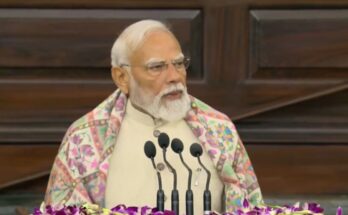Washington: NASA has said its Manager of the International Space Station Programme, Kirk Shireman, is retiring on June 26 to take a position in private industry, marking the second high-profile exit from the agency within a month.
Shireman has been in the position since 2015. Joel Montalbano, who has served as Deputy Program Manager since 2012, will serve as Acting Manager of the International Space Station Program, NASA said on Tuesday.
Shireman’s exit comes barely a month after NASA’s head of human spaceflight, Doug Loverro, abruptly stepped down from his position at the agency, citing a “mistake” that happened earlier this year.
Following Loverro’s exit, NASA Administrator Jim Bridenstine selected Commercial Crew Program Manager Kathy Lueders to be the agency’s next Associate Administrator of the Human Exploration and Operations (HEO) Mission Directorate.
Under Shireman’s leadership, NASA partners SpaceX and Northrop Grumman completed more than 30 commercial resupply missions, and SpaceX launched the first commercial crew test flight to the station.
The SpaceX Crew Dragon spacecraft carrying NASA astronauts Robert Behnken and Douglas Hurley successfully docked with the space station on May 31.
Shireman joined NASA in 1985.
“Kirk has dedicated 35 years of his career advancing and improving human spaceflight, and doing it in a collaborative way,” Lueders said in a statement.
“The relationships he has fostered within NASA, and with our international and commercial partners, have made the International Space Station a model for the incredible achievements possible through global cooperation.”
Prior to becoming deputy programme manager, Montalbano was the director of NASA’s Human Space Flight Program in Russia from 2008 to 2012.
He was a NASA flight director from 2000 to 2008. Montalbano began his career at NASA in January 1989.
“I am confident Joel’s leadership of this program will continue to expand the role of the space station as a national asset for exploration, science, and commercial use,” Lueders said.
For almost 20 years, humans have lived and worked continuously aboard the International Space Station, advancing scientific knowledge and demonstrating new technologies, making research breakthroughs not possible on Earth that will enable long-duration human and robotic exploration into deep space.
Under this unique international partnership, 239 people from 19 countries have visited the station.




